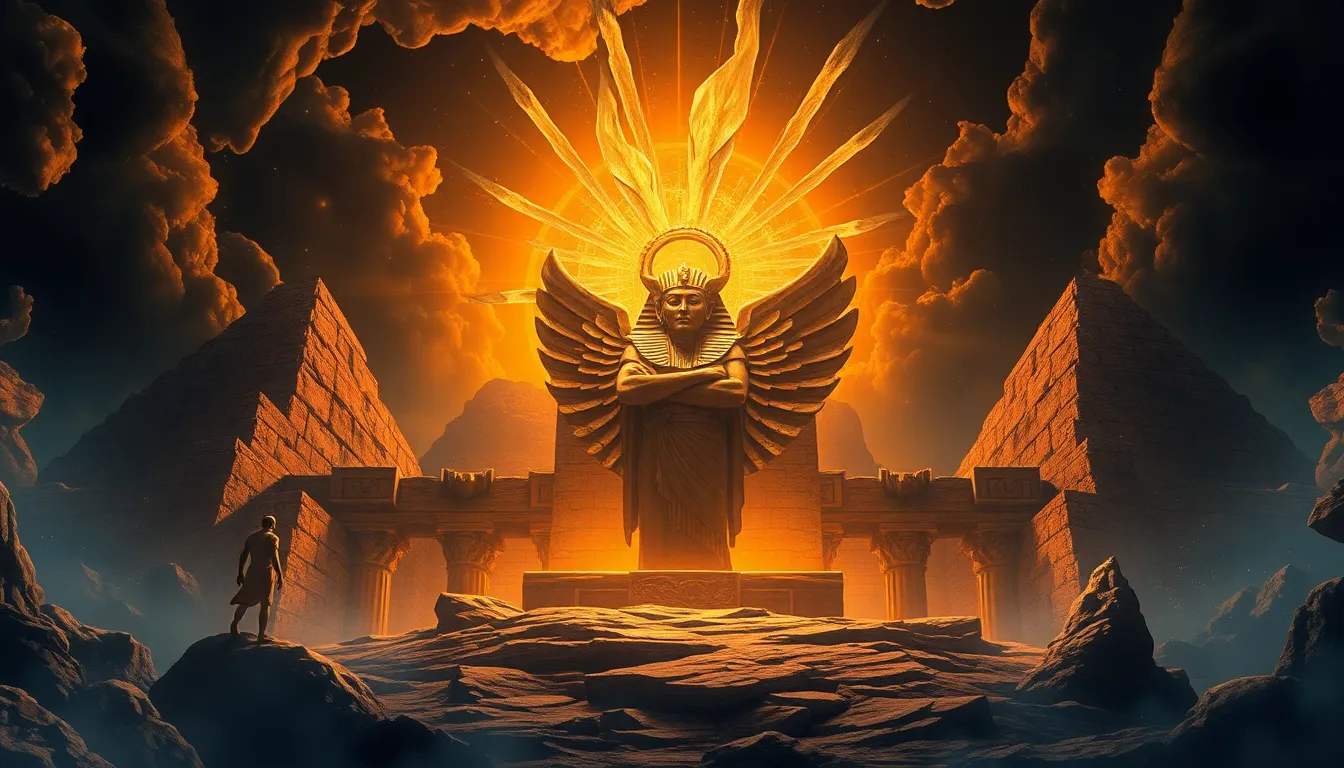The Myth of the Divine King: Stories of Triumph
I. Introduction
The concept of the “Divine King” refers to a ruler who is believed to be divinely appointed and often possesses supernatural qualities. This archetype is prevalent in various cultures and historical contexts, where kings are seen not just as political leaders but also as spiritual figures embodying the will of the gods. This article aims to explore the triumphs associated with the Divine King myth, examining its historical context, prominent figures, governance implications, and lasting legacy in modern culture.
II. Historical Context of the Divine King Myth
The origins of the Divine King concept can be traced back to ancient civilizations where the intersection of religion and governance was pivotal. Mesopotamia, Egypt, and the Indus Valley all featured leaders who were considered semi-divine.
A. Origins of the Divine King concept in ancient civilizations
In Egypt, for example, pharaohs were seen as gods on earth, ruling with divine authority. Similarly, in Mesopotamia, the kings were often depicted as chosen representatives of the gods, tasked with maintaining order and justice.
B. Cultural significance and variations across different societies
Across cultures, the Divine King myth varies, yet it often shares common themes:
- Divine right to rule
- Connection to fertility and agricultural success
- Role in rituals and religious ceremonies
III. The Divine King in Mythology
The Divine King archetype is represented in numerous mythologies, with figures who symbolize triumph over chaos and the establishment of order.
A. Analysis of prominent figures in mythology (e.g., Osiris, King Arthur)
Osiris, the Egyptian god of the afterlife, exemplifies the Divine King through his resurrection and role as a judge of the dead. His story emphasizes themes of death, rebirth, and eternal kingship.
Similarly, King Arthur of Arthurian legend represents the ideal of chivalry and justice. His reign is often depicted as a golden age, marked by noble quests and the establishment of a just society.
B. Symbolism and themes associated with these characters
Common symbols associated with the Divine King include:
- The scepter or staff, representing authority
- The crown, symbolizing divine right
- Mythical creatures, often serving as guardians or guides
IV. The Role of the Divine King in Governance
The Divine King myth has significantly influenced political structures and authority throughout history.
A. How the myth influenced political structures and authority
Leaders who embodied the Divine King archetype often justified their rule through divine sanction, establishing a governance model rooted in religious beliefs. This framework allowed rulers to maintain control and unify their subjects under a common spiritual narrative.
B. Examples of rulers who embodied the Divine King archetype
Prominent examples include:
- Pharaohs of ancient Egypt
- Emperors of Japan, viewed as descendants of the sun goddess Amaterasu
- Medieval European monarchs who claimed divine right
V. Triumphs and Challenges of the Divine King
The narrative of the Divine King is rich with stories of both triumph and failure.
A. Stories of successful reigns and their impact on society
Successful reigns often led to periods of prosperity and stability. For instance, the reign of Ramses II in Egypt is celebrated for military victories and monumental architecture, which reinforced the concept of the Divine King in the eyes of the people.
B. Examination of failures and how they shaped the myth
Conversely, the failures of rulers—such as the fall of the Western Roman Empire—often led to a reevaluation of the Divine King narrative, highlighting the fragility of power and the consequences of divine disfavor.
VI. The Legacy of the Divine King Myth in Modern Culture
The Divine King myth continues to resonate in contemporary culture, influencing various forms of media and political discourse.
A. Representation in literature, film, and popular media
Modern literature and films frequently feature characters that embody the Divine King archetype. Examples include:
- Aragorn from “The Lord of the Rings”
- Simba from “The Lion King”
- Various superheroes who take on leadership roles
B. Influence on contemporary leadership and governance ideals
The myth continues to inform ideals of leadership, where qualities such as moral authority, courage, and a sense of duty are highly valued in political figures today.
VII. Critical Perspectives on the Divine King Myth
Despite its enduring appeal, the Divine King myth has faced criticism from various perspectives.
A. Feminist and post-colonial critiques of the Divine King narrative
Feminist critiques highlight the often patriarchal nature of the Divine King narrative, questioning the exclusion of female figures and the reinforcement of gender hierarchies. Post-colonial perspectives examine how the myth has been utilized to justify colonialism and oppression.
B. Discussion on the relevance of the myth in today’s world
In today’s world, the relevance of the Divine King myth continues to provoke discussion, especially regarding its implications for leadership, governance, and societal values. The myth can serve as both an inspiration for virtuous leadership and a cautionary tale about the dangers of absolute power.
VIII. Conclusion
In summary, the Divine King myth is a rich tapestry of stories that reflect humanity’s aspirations for greatness and the complexities of power. From its historical roots to its modern interpretations, the concept continues to resonate, offering valuable lessons on leadership and the human experience. As we reflect on the enduring appeal of the Divine King myth, we recognize its potential to inspire both individuals and societies toward noble ideals and the pursuit of justice.




